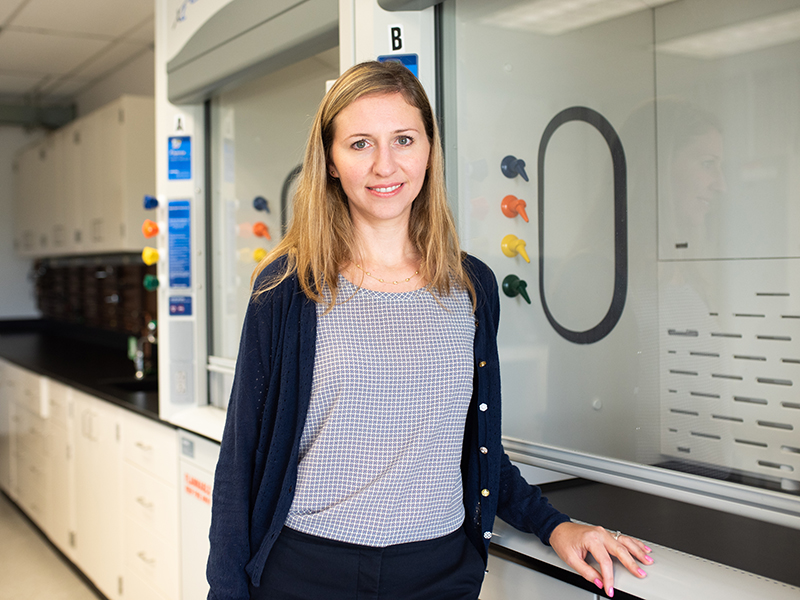At a glance
| Title | Pyroelectrically Generated electrons for chips-scale devices |
| Reference | 2022.15666.UTA |
| Scientific Area | Nano Materials for New Markets |
| Funding (PT) | 49 907 EUR |
| Funding (US) | 100 000 USD |
| Leading Institutions | INL – International Iberian Nanotechnology Laboratory, PT |
| Duration | 15 months |
| Start date | April 1, 2024 |
| End date | June 30, 2025 |
| Keywords | Pyroelectric, Electron Emission, Vacuum, Gas Sensor |
How can pyroelectrically generated electrons be used in chip-scale devices?
The exploration of a novel miniature chip-scale device has a wide range of applications in semiconductor industries (vacuum systems) and residual gas sensing applications. The results from this project can lead to several other product developments such as electron beam-assisted multi-gas sensing platforms, chip scale quantum sensors/clocks,and cathode luminescence-based ultraviolet (UV) emission for applications in disinfection, water purification and ionization sources for mass spectrometers, etc.
What critical challenges are pyroelectrically generated electrons addressing?
The main objective of the proposal is to demonstrate an electron emission from a pyroelectric thin film for chip-scale vacuum device applications. During the project, investigation of the RF magnetron sputter deposited pyroelectric lithium tantalate will be carried out. The deposited film on the silicon wafer will be investigated for electron emission during the thermal ramping (10-70 degree Celsius). The advantage of pyroelectric electron emission compared to the miniature nanowire or CNT electron emission is, this system does not require a high voltage source for electron emission, long life of the electron source (nano tips degrade over time), less fabrication cost and is easy to achieve fabrication process repeatability.
How will pyroelectrically generated electrons optimize the production of new products?
Project execution is divided into three tasks:
1) Pyroelectric thin film development for the electron emission, where the material deposition parameters will be optimized to obtain better crystal quality. During the project tenure, three variants of pyroelectric electron sources (using three different pyroelectric thicknesses) will be developed and calibrated for vacuum level and residual gas identification.
2) Experimental validation of the pyroelectric electron source as a chip-scale electron source, where accurate temperature control, electron density, and electron energy measurements will be carried out.
3) Application demonstration using chip-scale pyroelectric electron source, where two application demonstrations are envisioned: one is to measure the vacuum level.
How are pyroelectrically generated electrons contributing to nanomaterial research?
The electron beam source market is rapidly growing with an annual growth rate of 21%. Electron beams are used in applications ranging from the space industry to the healthcare and food sectors. The proposed robust and chip-scale electron source along with the proposed new applications will enable new applications and products.
Key Expected Outcomes
Along with research output, the proposal is aimed to bring a commercial contribution in sectors such as miniature vacuum components suitable for chip-scale quantum sensors/clocks, electron sources for multi-gas detection, electron source for operation in the harsh environment, etc.
Both teams (INL and UT Austin) are in initial discussions with several industries with expertise ranging from gas sensors to vacuum components. The proposed chip-scale electron source for different applications has stimulated several discussions among the industrial partners. This exploratory funding will support a competence to demonstrate several initial results, which can eventually help the teams to seek bigger grants and industrial support to work towards a particular application.
Project Team
Filipe S. Alves
Tanya Hutter
- Other team members in Portugal: Rui M. R. Pinto (INL – International Iberian Nanotechnology Laboratory), João Cunha (INL – International Iberian Nanotechnology Laboratory);


